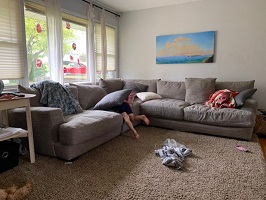In this our last class before the end of the term, you will
work on the fancy paper from the supply list at the beginning of the
semester. I asked you buy a full sheet
(22x30) of either Arches Cover paper or Rives BFK paper. This paper is much more expensive than our
regular drawing paper because it is WAAAAY better. It is 100% cotton with a
much more pronounced tooth, and it is very durable. Both papers have slightly different textures.
They are market competitors (think Nike and Adidas or KFC and Popeye’s), but
neither is better than the other. You
will not erase through them and they won’t disintegrate from too much
water. Primarily marketed as printmaking
papers, both are excellent for nearly every drawing medium out there.
For the class exercise this week, you have a choice of
making one 4 hour drawing or two 2 hour drawings. If you choose the one, keep your 22x30 sheet
intact. If you choose the two, I will
show you how to properly tear your sheet in half. In your drawings, the amount
of effort expended should be evident in the drawings!
You are to choose what you would consider to be successful
but unfinished drawing(s) done at some point in class. On this fancy paper,
using any medium you’d like, you are to redraw and attempt to fully develop
your composition(s), plausibly inventing or inferring any details you may need
to finish it. This invention is necessary because you will not be working from
any photos! Instead, imagine what should be there. Do your best to logically
solve each area so that the space in each drawing stays plausible. You are to
work your invented details as realistically as possible. Your drawing should use the full range of
value available and it should display dramatic light and shadow.
This is NOT meant to be a cartoon version of the subject!
There will be a degree of stylization as you struggle to figure out the
invented parts, but try to be as realistic as you can. Feel free to borrow
aspects of other drawings (even from other artists) to make your drawing(s) as
successful and developed as possible.
Enjoy working on the fancy paper!












